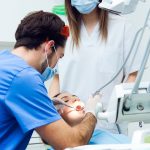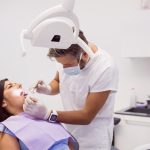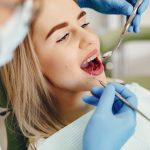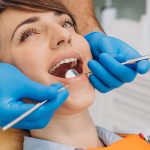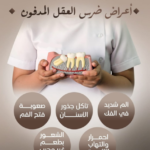Do you notice that your lower teeth stick out past your upper teeth when you close your mouth? If so, you may have an underbite.
This condition can affect both your appearance and oral health. While some people have a mild misalignment, others have a severe underbite that may require professional treatment.
Many people wonder how to fix an underbite, and the answer depends on the severity of the condition. Some cases can be corrected with braces or aligners, while others require underbite surgery for a permanent solution.
What is an Underbite?
An underbite occurs when the lower jaw extends forward beyond the upper jaw. This misalignment causes the lower row of teeth to sit in front of the upper teeth instead of behind them. Some people have a minor underbite that is barely noticeable, while others have a severe misalignment that affects their ability to chew and speak properly.
While an underbite may not always cause pain, it can lead to long-term dental problems if left untreated. Severe cases often require underbite surgery to realign the jaw, while milder cases can be corrected with braces, aligners, or dental appliances. The right underbite treatment depends on factors such as the severity of the misalignment, age, and overall dental health.
Symptoms of Underbite
People with an underbite may experience various symptoms depending on the severity of their condition.
1. Difficulty Chewing Food
One common symptom is difficulty chewing food properly, as the misalignment can make it hard to bite into or break down food efficiently.
2. Speech Issues
Speech issues, such as a lisp or difficulty pronouncing certain words, are also common in people with underbite teeth.
3. Pains
Jaw pain is another frequent symptom of an underbite. Because the lower jaw is pushed forward, it can create tension in the jaw muscles and lead to chronic discomfort.
Some people also experience frequent headaches and earaches due to the strain placed on the jaw joint. Over time, an underbite can cause excessive wear on the lower teeth, leading to erosion, chipping, or even fractures.
4. Change in Facial Structure
If you have an underbite, you may also notice changes in your facial structure. The lower jaw may appear more prominent, giving the face a slightly different shape. Many people seek underbite correction not just for health reasons but also to improve their facial symmetry.
Seeing underbite before and after results from treatment can show how much of a difference underbite correction can make in both function and appearance.
Causes of Underbite
1. Genetics
An underbite can develop for several reasons. One of the most common causes is genetics. If one or both of your parents had an underbite, there is a high chance that you might develop one as well. The shape and size of your jaw are largely inherited, and some people are naturally predisposed to having a larger lower jaw.
2. Childhood Habits
Certain childhood habits can also contribute to the development of an underbite. Prolonged thumb-sucking, pacifier use, or bottle-feeding beyond infancy can push the lower jaw forward over time. Tongue-thrusting, which occurs when the tongue pushes against the lower teeth while swallowing, is another habit that can lead to an underbite.
3. Jaw Growth Abnormalities
In some cases, an underbite can develop due to jaw growth abnormalities. If the lower jaw grows at a faster rate than the upper jaw, misalignment occurs. Injuries or trauma to the jaw can also result in an underbite, especially if the bone heals incorrectly.
4. Breathing Issues
Chronic mouth breathing due to nasal congestion or allergies may also affect jaw development and contribute to an underbite.
How to Fix Underbite?
Many people wonder how to fix an underbite without surgery. The good news is that several non-surgical options are available for mild to moderate cases.
Orthodontic
Braces and clear aligners are among the most effective treatments for underbite correction. These orthodontic solutions gradually shift the teeth into the correct position over time. While treatment with braces can take several months to years, it is a reliable way to fix an underbite without invasive procedures.
Dental Appliances
Dental appliances are another non-surgical method for underbite treatment. Expanders, chin caps, and reverse pull headgear can help correct jaw misalignment, especially in children whose bones are still developing. These devices guide the growth of the jaw to prevent the underbite from becoming more severe.
For minor cases, dentists may reshape or remove specific underbite teeth to improve alignment. This method is not suitable for everyone, but it can be an option for those who only need slight adjustments.
Surgery
In severe cases, underbite surgery is the most effective solution. This procedure involves repositioning the lower jaw so that it aligns properly with the upper jaw. Underbite surgery is performed by an oral surgeon and usually requires a few weeks of recovery.
Many patients who undergo surgery see significant underbite before and after transformations, both in function and appearance.
Underbite Before and After: What to Expect
If you are considering underbite correction, looking at underbite before and after images can be helpful. Patients who undergo treatment often experience improvements in both their bite and overall facial structure. Their teeth become better aligned, making it easier to chew and speak. Many people also feel more confident in their appearance after correcting their underbite.
Braces and aligners gradually shift the teeth into place, resulting in a more balanced bite. Those who opt for underbite surgery typically see the most dramatic changes, as the jaw is realigned to create a more symmetrical facial profile.
Conclusion
An underbite can cause discomfort, difficulty chewing, and changes in facial appearance, but there are effective ways to fix it. If you are wondering how to fix an underbite, consulting a dentist or orthodontist is the best first step. Seeing underbite before and after results from successful treatments can give you the confidence to seek the right underbite correction for a healthier, more comfortable smile.

